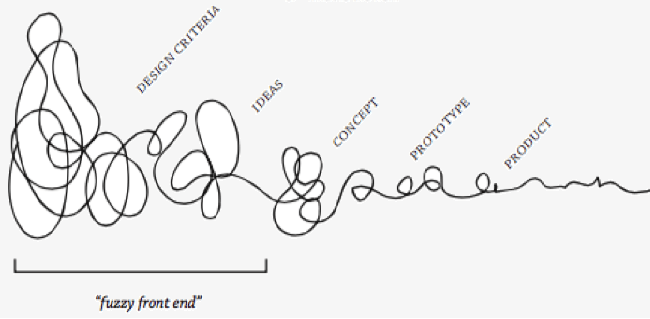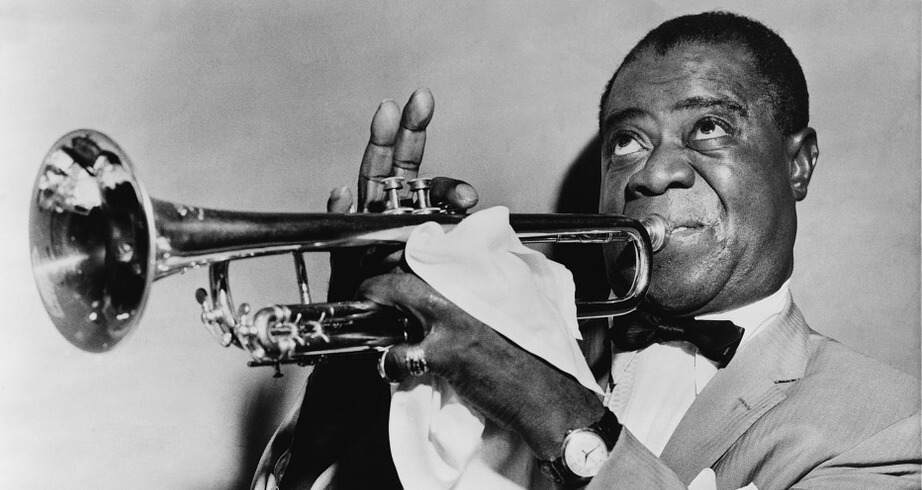All Blues - Miles Davis
It is 1959. The recording tape is running. Pianist Bill Evans bets on the 6 / 8-th beat of drummer James Cobb. Saxophonists Adderley and Coltrane use the notes that have become so famous. Then comes Miles's trumpet. In 11 minutes and 33 seconds, the musicians create a masterpiece: All Blues. What makes the song so special: they discover the music at the same time as they play it.
Less than an hour ago: Miles is in the studio on 30th street in New York City waiting for his musicians: Julian “Canonball” Adderley, Paul Chambers, James Cobb, John Coltrane and Bill Evans. Last night, Miles put some more clues on paper. Very briefly: some chords G7, C7, Eb7, surprising because you would expect a D7, and the number of bars they play those chords. And a direction of melody. The rest still don't know anything about it. Yes, they know they are going to record a record. No preparation, no rehearsal, but recording a record. Footsteps, laughter, “Cannonball” is coming, with his roguish mustache. From now on it is no longer in his hands, the hands of Miles Davis, but the group decides.
7 lessons from a jazz band
1. Break through existing patterns
Jazz musicians learn to improvise by practicing a lot of patterns. Called short "crips" or "licks". Combining these patterns creates solos. Nice solos, but also a bit safe, on average. The improvisations that really touch the audience, the memorable solos, arise when the soloist breaks through patterns. That takes guts. And exercise. Saxophonist John Coltrane often played familiar songs in strange keys, so that he could not rely on ingrained patterns in his head and fingers. And "Kind of Blue", the masterpiece by Miles Davis is largely improvised. The musicians only heard what they were about to play in the studio.
Break through patterns within your organization. Let people work in another department. Or let them exchange jobs for a week. Go on an excursion to another company. Get cross thinkers in and give them total freedom to ask anything and to think about anything.
2. Embrace mistakes and learn from them
Jazz musicians often make mistakes. The hands produce a different melody than the inner voice intended. Often the audience does not even realize it. How is that possible? The musician does not hear the error, but hear the error as an opportunity. Herbie Hancock once played a wrong chord during a concert. Miles Davis heard it. He didn't think: No, a mistake! However, he did not ignore the error either. He emphasized the error by continuing on the wrong chord. Due to the mistake, the band went a new way. Miles Davis:
“When you hit a wrong note, it's the next note that you play that determines if it's good or bad.”
You have to learn from mistakes, but we are not very keen to share mistakes with each other. Sharing successes is much easier. Create a culture where you can make mistakes and learn from mistakes. Because sometimes an error can produce very valuable innovation. In 1968 Dr. Spencer Silver to develop a very strong glue. However, his innovation failed. He developed a weak but reusable adhesive. Worthless! Until in 1974 his colleague Art Fry figured out that he could apply the glue to notes so that they would no longer fall out of his music book. The Post-It was born.
3. Create a minimal basis as a starting point for maximum flexibility
Improvisations are played on the chord scheme of a song. The schedule is fixed and is repeated repeatedly. By this common basis the room to improvise. The individual musicians can discover new melodies because they play on the same basis with the rest of the band.
The most important basis of an organization is the why. Why do we do the things we do? If you haven't seen it yet. Watch the video below: Start with why.
4. Play together
Jazz consists of soloing, but the strength is in the band's interplay. Playing together is giving and taking. Jazz musicians communicate continuously. They listen to the subtle clues they give each other: an accent from the drummer or a nod from the trumpet player. It is "grooved", musicians say when the interplay is optimal. Buster Williams about playing with Miles Davis:
“With Miles, it would get to the point where we followed the music rather than the music following us.”
Encourage direct communication inside the organisation. Encourage people to walk in together so that they are apart hear what's going on. Start every day with a stand-up: a short meeting in which team members indicate what they are doing and where other team members can help. Take care of it too online status updates: working out loud. By telling what you are doing, you give your colleagues the opportunity to give you tips or ask questions. This way, new insights spread throughout the organization and you can respond to them faster.
5. Do not fear chaos
Improvisation often comes from nothing. The musician just starts playing. There is no pre-defined plan, no blueprint. He does not look ahead, but starts and looks back at what he has played. When you hear jazz for the first time, it seems like chaos. But if you listen carefully, there appears to be a pattern. The pattern was not conceived in advance and could not be performed. It originated. Musicians are trained to recognize these patterns at lightning speed. This allows them to build on it and creates a coherent number.

A delicious name for the first phase of the innovation process is the fuzzy front end. Innovation is chaos. The environment is so dynamic that this chaos cannot be prevented. De The challenge is to trust that patterns will arise within that chaos if employees can reflect on what they do and learn from it.
6. Encourage hanging around and watching
You don't learn to play jazz from a book. You don't learn it with a music teacher. You learn jazz from each other. By listening to old records with each other, replaying them and through jam sessions with each other: playing together, just doing it. This is how ideas flow and they are put into practice immediately. Jazz is one scenes. It is not for nothing that certain places are known as the birthplace of good jazz, such as Detroit, Chicago and New York. These were places where many musicians met and played together.
Change within organizations does not only come from the innovation department. Innovation is everywhere. Encourage employees to meet and talk about what they are doing. Learn from what goes well and from the mistakes that are made. In this way insights are spread and they can be combined. Must copy! The example of Post-It also applies here.
7. Lead and listen
Jazz is good music, because everyone is waiting their turn. Of course there is a band leader, but the leadership changes during playing. The instruments alternate with solos. One musician shines during a solo, but the rest of the band is just as important. They lay the foundation on which the soloist can improvise. However, that basis is flexible, because the soloist is the leader. The band must therefore be able to listen very well and adapt to the solo. Everyone is heard in jazz, everyone gets the space to express their ideas.
Join that at many organizations. So many voices are not heard. Isn't it time for a monthly jam session in the organization or, for a start, in the department? Thinking out loud, venting ideas, listening to each other and learning from each other. Organize hackathons: sessions of one or several days in which people from different disciplines develop a concept or even a working prototype.
Innovation is improvising
Innovation cannot be planned. Innovation must be lean, with short iterations and quickly developed prototypes. Innovation is improvising. Jazz offers organizations a lot of inspiration. And jazz songs are of course delicious work vitamins.
Source: The 7 lessons are derived from the articles that Frank Barret published in 1998: “Creativity and Improvisation in Jazz and OrganizationsIn the scientific journal Organization Science.


